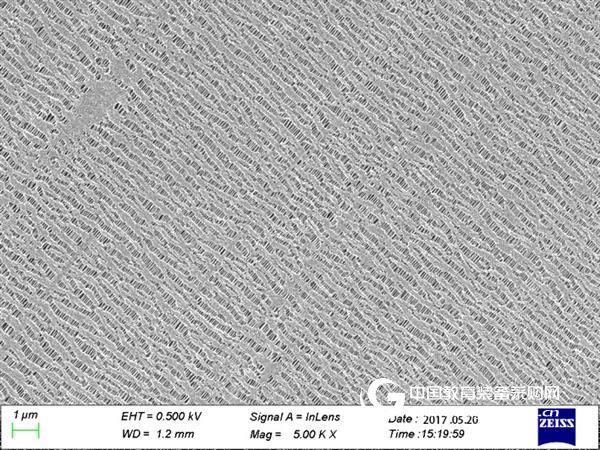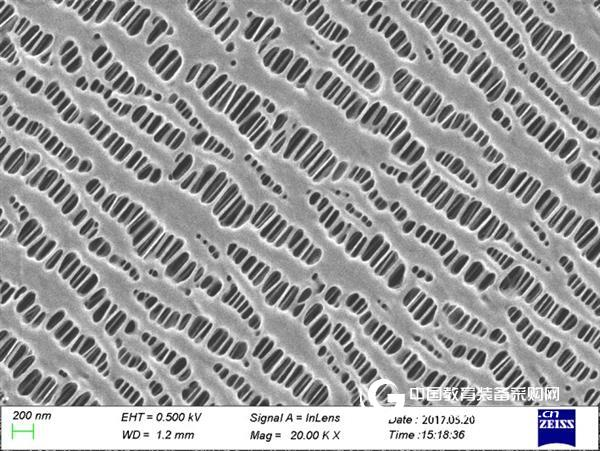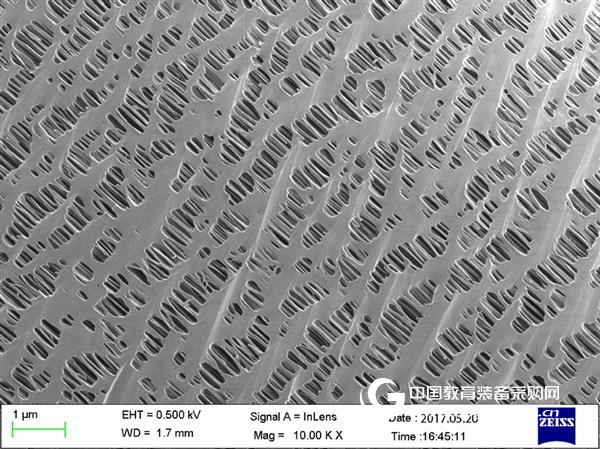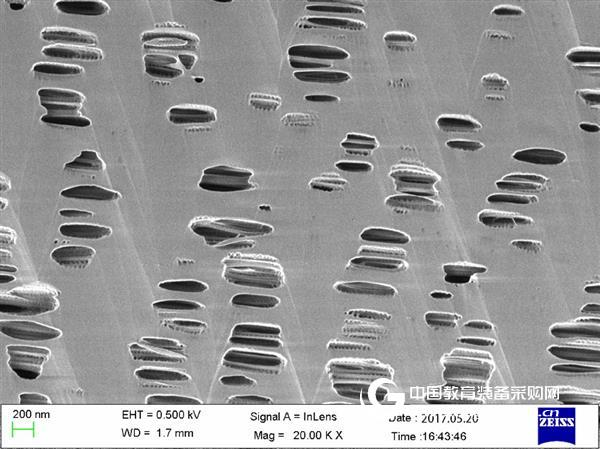Overview
In the last issue, we used the scanning electron microscope to analyze the fine structure and composition of the lithium battery anode material. We have a corresponding understanding of the application of electron microscopy in battery anode materials. This issue of Xiaobian continues to lead you to understand the role of scanning electron microscopy in the study of battery separators.
In secondary batteries including lithium ion batteries, the separator is an indispensable and important component. Its role is: First, the diaphragm itself is not conductive, the battery positive and negative electrodes are separated to prevent internal short circuit of the battery; Second, the diaphragm has a microscopic degree of pore structure, which facilitates the ion transfer in the electrode liquid, ensuring charging and Efficient migration of ions during discharge.
First, sample preparation
The sample selected for Xiaobian is a polypropylene (PP) type lithium ion battery separator. In order to understand the related structure of the lithium ion battery separator, Xiaobian decided to analyze from the surface and the cross section. After the sample is sprayed with gold, it is directly fixed on the carbon conductive adhesive to observe the planar sample. The preparation of the cross-section sample is also carried out by Gatan's argon ion polisher (PS: specific preparation method, please refer to the previous issue, Rong Xiaobian Steal a lazy).
Second, SEM analysis of the surface of lithium ion battery separator
The surface of the lithium ion battery separator was observed by a ZEISS scanning electron microscope as shown in Fig. 1. Unlike the macroscopically smooth surface of the diaphragm, it was found that there was a large number of pore structures on the surface of the diaphragm. Further magnifying the sample revealed that the pores of the membrane surface had a pore diameter of 100 to 200 nm and extended from the surface to the inside of the membrane.


Figure 1. SEM image of the diaphragm surface of a lithium-ion battery
Third, SEM analysis of diaphragm section of lithium ion battery
The degree of porosity of the lithium ion battery separator directly affects the diffusion rate of the electrolyte, which has a great influence on the performance of the battery. Therefore, it is important to analyze the pore structure inside the separator. Figure 2 is a cross-sectional scanned image of the diaphragm. It can be seen from the image that the surface after polishing by the Gatan argon ion polisher is smooth and smooth, and it is easier to obtain an ideal image than the cross section obtained by ordinary shear processing. The holes inside the diaphragm penetrate each other and extend from the surface of the diaphragm to the inside. As can be seen from the enlarged image, the pores of the membrane are formed by fibers of several tens of nanometers.


Figure 2. SEM image of the diaphragm section of a lithium-ion battery
in conclusion
Through the analysis of the fine structure of the diaphragm by scanning electron microscopy, it is known that there are a large number of disordered pore structures inside the separator of the lithium ion battery, and the size of the pores is between 100 and 200 nanometers. Since the development of secondary batteries, a large number of new types of batteries have emerged, and the demand for battery separators has also become diverse, and reports on functional separators have been continuously published. Scanning electron microscopy with powerful functions and universality will play an important role in the exploration of new materials as an intuitive and effective means of characterization.
Lunch Bag Collection,Color Sleeve Value Packing,Borosilicate Glass Measuring Cup
Guangdong DK Houseware Co., Limited , https://www.dkhouseware.com